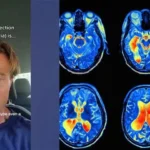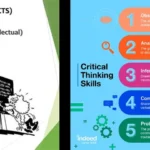How Can You Teach Children about the Power of Wise Mind?:Are you struggling to explain the concept of wise mind to a child? Well, you’re not alone! Wise mind can be a tricky concept to grasp, even for adults. But fear not, because in this blog post, we’re going to break it down in a way that even the youngest minds can understand. So get ready to embark on a journey of wisdom and clarity as we unravel the secrets of the wise mind. Whether you’re a parent, teacher, or simply curious about this fascinating concept, this guide will equip you with practical steps and real-life examples to help children tap into their wise mind. So let’s dive in and unlock the power of wise mind together!
Understanding the Wise Mind Concept
When attempting to explain the concept of Wise Mind to a child, it is essential to simplify the concept without losing its essence. Wise Mind is a fundamental aspect of our mental processing that merges two critical components: the Reasonable Mind and the Emotion Mind. It’s where our ability to think and feel harmoniously coexist, allowing us to act from a place that is neither purely emotional nor solely rational.
The Intersection of Thought and Feeling
Imagine you have two friends: one who thinks deeply before doing anything (Reasonable Mind) and another who acts on how they feel at the moment (Emotion Mind). Wise Mind is like having both friends talk to each other to make a decision that considers both thought and feeling. It’s a balanced state where we find peace and make decisions that feel right.
Calmness and Peace in Decision-Making
Children can relate to the idea of feeling calm and peaceful. Explain that the Wise Mind is like being in a quiet room where they can hear themselves think and understand their feelings without any noise. In this calm state, children can discover their inner truth and wisdom, tapping into what they know to be right, both in thought and in emotion.
The Role of Wise Mind in Communication and Clarity
One of the significant advantages of introducing the concept of Wise Mind to children is its potential to facilitate better communication. By conceptualizing our thoughts and feelings in this way, we can create a common language that bridges the gap between the adult world and a child’s experience.
Accessing the Wise Mind for Awareness
Explain to children that Wise Mind is like having a superpower where they are fully aware of their emotions and can listen to what reason says. It’s like being a detective who gathers clues (emotions and facts) and then solves the mystery (makes a decision).
Wise Mind and the Spectrum of Clarity
Clarity isn’t always black or white; sometimes, it comes in shades. Wise Mind helps children understand that clarity can vary, and it’s okay not to have all the answers immediately. It’s about being comfortable in that space between knowing and feeling, and allowing the answer to emerge over time.
Practical Steps to Accessing the Wise Mind
Teaching children to access their Wise Mind involves simple steps that help them recognize when they are in their Emotion Mind or Reasonable Mind, and how to find the balance between the two.
Distinguishing Between Emotion and Reason
Using the principles of Dialectical Behavioral Therapy (DBT), we can illustrate the differences between the Reasonable and Emotional Minds. Reasonable Mind is when we’re cool, logical, and collected, like a scientist. Emotion Mind is when our feelings are in the driver’s seat, like an artist immersed in passion. Wise Mind is the bridge that brings these two together.
Wise Mind in Action: Real-Life Examples
Children learn best through examples, and Wise Mind can be made relatable through scenarios that resonate with their experiences. For instance, when they feel angry but know that lashing out isn’t helpful, Wise Mind is what helps them pause and consider how to express their feelings respectfully.
Integrating Intuition for True Desires and Needs
Another aspect of Wise Mind that we can impart to children is the role of intuition. Sometimes we know something without knowing why. That’s our intuition speaking. Wise Mind listens to this inner voice, helping us uncover what we truly need or want, even if it’s hidden deep within us.
Wise Mind’s Superior Approach to Decision-Making
Why is Wise Mind preferable to just thinking or feeling? It’s because Wise Mind offers a more comprehensive approach to life’s decisions. By understanding the benefits of the Reasonable and Emotional Minds, children can learn why integrating these aspects leads to healthier, more fulfilling choices.
The Holistic Perspective of Wise Mind
Using Wise Mind is like looking at a map before going on a journey. It gives us the bigger picture, showing us not only the path we’re on but also the terrain around us. This holistic view is invaluable, especially when navigating through complex emotions and challenging situations.
Encouraging the Development of Wise Mind in Children
Developing a Wise Mind is a skill that can be nurtured in children. It involves practicing mindfulness, encouraging reflection, and fostering an environment where both thoughts and feelings are valued. By doing so, we’re empowering children to make choices that are balanced, thoughtful, and true to their hearts.
Activities and Exercises to Foster Wise Mind
There are engaging exercises and activities that can help children practice accessing their Wise Mind. This can include guided meditations focused on balancing emotion with reason, role-playing scenarios where they must make decisions considering both their feelings and the facts, or journaling exercises that encourage introspection and reflection.
By weaving these practical applications into a child’s learning process, we not only explain the concept of Wise Mind but also provide them with the tools to apply it in their daily lives. This empowers children to approach situations with a balanced perspective, leading to better decision-making and a deeper understanding of themselves and the world around them.
Conclusion: Embracing the Wise Mind for Lifelong Learning
The concept of Wise Mind might seem complex, but it’s a powerful framework that can guide children throughout their lives. By breaking down the concept into relatable terms, providing real-life examples, and offering practical tools, we can help children understand and embrace their Wise Mind, leading to a more balanced and insightful approach to life’s challenges.
In the journey of personal development, fostering a Wise Mind is a gift that will continue to serve well beyond childhood. It’s not just about making better decisions; it’s about cultivating a way of being that embraces the full spectrum of human experience – thought, feeling, and intuition – in a harmonious and wise manner.
FAQ & Common Questions about Wise Mind
Q: What are the benefits of wise mind?
A: Wise mind provides a holistic, bigger picture approach that can guide individuals down the path that is most helpful given their needs and circumstances at a given point in time. It combines the benefits of both the Reasonable and Emotional Minds.
Q: How do I know I am in wise mind?
A: You know you are in wise mind when you experience a sense of intuition or have an “aha” moment. It is a combination of reason and emotion, and it is often described as a feeling of knowing and experiencing truth.
Q: What type of skill is wise mind?
A: Wise mind is a skill that combines both reason and emotion. It is the ability to tap into your intuition and make decisions based on a holistic understanding of the situation. It is described as a part of each person that can know and experience truth, according to DBT founder Marsha Linehan.





